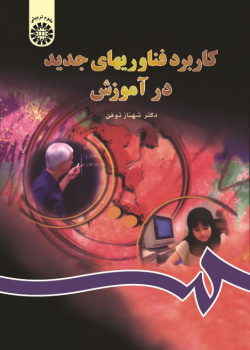

Applications of New Technologies in Teaching
What does it mean to be literate in the age of technology? How can we make a scholar and a pundit out of a student by the use of technology? In a society which has a different culture from that propagated by the media how can we learn the ways of living and working? How can the teachers use technology to devise teaching plans? This book attempts to provide answers to similar questions, so that educational experts can devise learning methods that prepare people to live in an ever changing brave new world. The use of electric technology and their fusion with students’ experiences of learning helps students in becoming skilled at the following matters: decision making, model selection, scientific research, experimentation, various dimensions of art, solving real problems, and finally taking part in human and social gatherings and communities.
In this book the questions of educational methods in an age of technology is addressed in eight chapters consecutively: in the first chapter, the social and historical principles and conditions of educational technology is put forward. The second chapter, titled “Creating Learning opportunities”, covers history of education and programming especially traditional models of creating learning opportunities. In the third chapter, the use of computers in education and learning is debated and computer is introduced as a scientific means at the service of teachers and students alike. In the fourth chapter titled “The System of Computers”, the composing elements of a computer and the role of each in the overall function of the machine is discussed. In the fifth chapter titled “The Primary Functions of a Computer”, the use of word processors, graphic programs, web pages and Information banks and their educational functions are explained. In the sixth chapter titled “Tele-application of the computer; the Internet” a short history of the Internet is given and the role of computer networks available to humans for the use of their scientific content, their influence on the learning abilities of people, and the method of working out an educational scheme based on these information archives are studied. In the seventh chapter first amazing progress made in optical laser computer is discussed and then the features of computerized multimedia, the different kinds of these computers like virtual reality,
their influences on an educational environment and the instruments used in creating these media are analyzed. In the eighth chapter telecommunication systems are discussed and the focuses on theories that consider learning a social process.
Compiled for the students of educational science as a textbook for the course “The Use of Educational Materials”, in this book the questions of educational methods in an age of technology are addressed.





